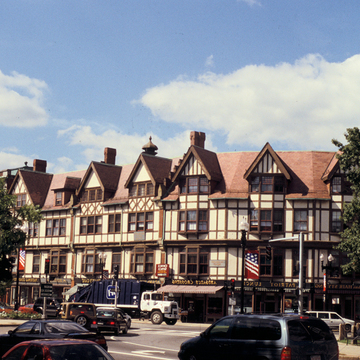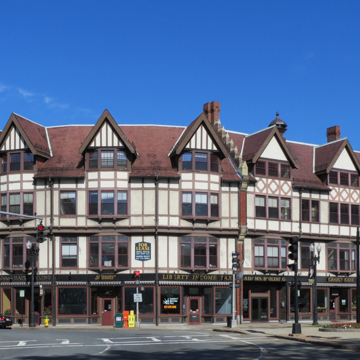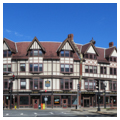John Quincy Adams II, namesake grandson of the president, commissioned this commercial block as a real estate investment. Originally there were stores on the ground floor, offices on the second floor, and an Odd Fellows Hall on the third. Space on part of the third and the fourth floors was allocated for a rooming house. Adams himself had his office in this building. The north half of the block, extending from Hancock Street around the corner onto Temple Street, was added in 1889–1890.
Educated at MIT and trained in the offices of Richard Morris Hunt as well as those of McKim, Mead and White, J. Williams Beal's long career began when he opened an office in Boston in 1881. The Adams Building benefits from its architect's recent transatlantic tour, for its design is clearly based on the great medieval urban blocks then still extant in England. By building a block whose style paid homage to medieval England, the Adams family created a tangible link to their Anglo-Saxon heritage.


















